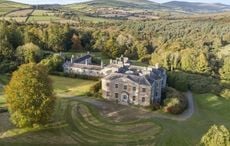Property on the stunning and historic Great Blasket Island is up for grabs in an exceedingly rare auction.
The Blasket Islands are a source of wonder and fascination. From these six Co. Kerry islands off the Dingle Peninsula came some of Ireland's most revered Irish language writers, such as Peig Sayers, Thomas O’Crohan, and Maurice O'Sullivan.
Evacuated in 1953 by government order, Great Blasket Island, the largest of the islands, has been left alone for wildlife for much of the past 65 years.
Now, a highly rare opportunity to own land on Great Blasket Island has emerged.
Read more: Mayo and the Cliffs of Moher tours
According to the listing from Dingle Properties, the parcel of land for sale is comprised of a historic cottage in ruins and three fields. One on the north side of the island, a larger field facing east, above the beautiful sandy beach called The White Strand. And a third beside the cottage in the (mostly) abandoned village.
Read More: When Blasket Islanders were evacuated to the mainland in 1952
The total spread consists of approximate 1.6137 hectares and also a circa 42 acre share of the commonage land on the island.
While the identity of the sellers is unknown, they are from a family once prominent on the island and trace their roots on Great Blasket to the early 1800s.
Per the listing:
The site of the cottage is close to the cottage known as the King's house. The title of King was common in the social structure of some of the islands off the west coast of Ireland. The Blasket king's role was that of community leader, postman, host (it was here where the writer J.M Synge, Celtic scholars Carl Marstrander and Robin Flower stayed) and translator. Peaidí Ó Catháin was king on the Great Blasket and postman from about 1907 succeeding from his grandfather who lived to be 100 years old. The current owners of the parcel that is for sale belong to the same family group and trace their roots on the Island to the early 1800s.
Read more: The most beautiful Irish cottages for sale right now - one could be yours
The Blasket Islands were inhabited for centuries by a small but close-knit Irish speaking population who followed a traditional way of life – farming, fishing, weaving – and eventually became the subjects of important linguistic studies for their use of a largely unchanged version of the Irish language.
At its peak, Great Blasket Island had only some 175 residents, but their cultural output was immense, including important Irish language works such as "The Islander," by Thomas O’Crohan, "Twenty Years a-Growing," by Maurice O’Sullivan, and "Peig," by Peig Sayers.
Read more: Galway and the West tours
The 1953 evacuation, ordered by then-Taoiseach Eamon de Valera, was largely accepted as a necessity. The Blasket Islanders – by then a population of only 22 – were cut off from communication or any emergency assistance from the mainland and facing increasingly extreme weather patterns. They were offered new land parcels, most at Dunquin on the mainland, from which they could see the island they had left.
Read more: US woman swaps life in sunny San Diego for dream cosy cottage in Donegal
Today, the Great Blasket Centre in Dunquin offers a rich account of the islands’ history and culture. Weather permitting, ferries also take visitors around the islands during the summer months. Accommodation is available on a limited basis to those wishing to spend the night on Great Blasket.
Read more: Kerry and the Wild Atlantic Way tours
Would you want to own land on Great Blasket Island? Share your thoughts in the comment section.




Comments